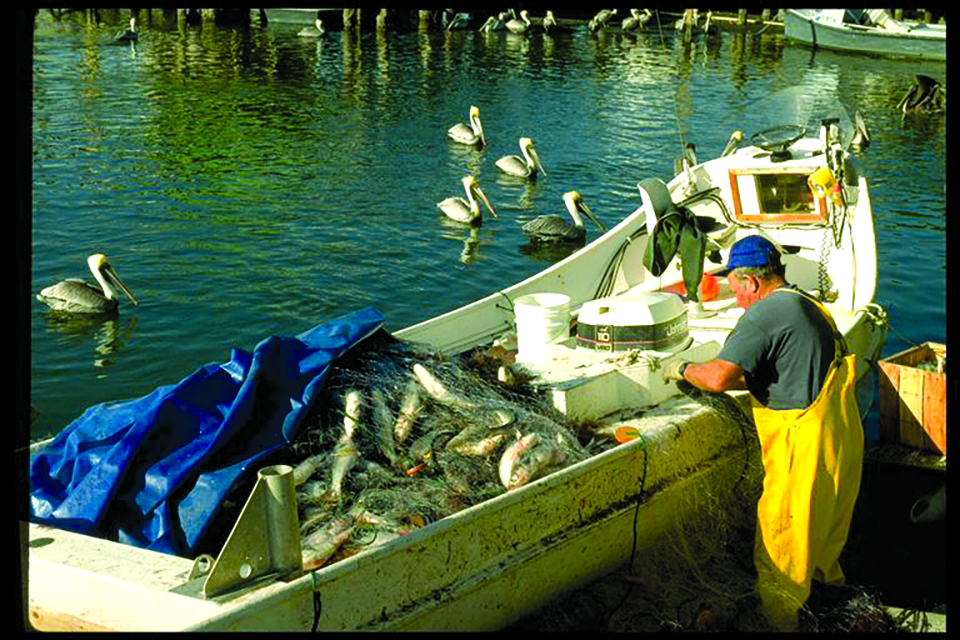Twenty-five years after Florida’s gillnet ban, state commercial landings are down
The Roaring 90s marked the nation’s longest period of uninterrupted economic growth in modern history. A few milestones from the first half of the decade included the introduction of the Ford Explorer, which sidestepped fuel economy standards and helped ignite America’s ongoing love affair with gas-guzzling SUVs; Saddam Hussein’s 1990 invasion of Kuwait, which started the Gulf War that culminated in the early 1991 shock-and-awe Operation Desert Storm; the 1992 election of President Bill Clinton; NAFTA; the 1995 IPO of the unprofitable search engine company Netscape Communications, which helped inflate a five-year investing bubble in dot-coms; Congress’ reversal of the fuel-conserving 55 mph national speed limit that had been in effect since the 1973 Arab oil embargo; the O.J. Simpson Trial; and the nation’s worst act of domestic terrorism up to 1995, when Timothy McVeigh exploded a bomb outside a federal building in Oklahoma City, killing 168 people.
Commercial fishermen may associate that same period with an unprecedented wave of attacks by environmental groups and sportfishing interests.
The dam broke after 1990 when the United Anglers of California convinced Golden State voters to ban the use of nearshore fishing nets. By the mid-1990s, sportsmen had mobilized in Alaska, Oregon, Washington, Pennsylvania, New Jersey, North Carolina, and four of the five Gulf Coast states. (Texas had already banned nets in 1988.)
The battle over nets in the Sunshine State was called the Mother of All Fish Fights, and rightly so: Florida’s extensive coastline had supported prodigious fisheries that gave rise to a deeply embedded commercial fishing culture that reached back centuries. By the 1990s, a hundred years of rampant coastal development, explosive population growth and a tsunami of recreational anglers had taken its toll. Still it took a shock-and-awe media campaign and a passel of naïve voters to dislodge the state’s net fishermen.
Plummeting catches
It’s been more than 25 years since Florida’s electorate approved the constitutional amendment banning most inshore commercial fishing nets. The amendment prohibited the use of “gillnets or other entangling nets,” including drift nets and trammel nets. Nonentangling nets, such as seines and trawls, are permitted but may not contain more than 500 square feet of webbing.
That ain’t a lot to work with, especially when you’ve been fishing a net up to 600 yards long. So it was a no-brainer that commercial fishermen would be bringing in less fish.
Anticipating that voters in the November 1994 election would nix the nets and the state would be on the hook for compensation, the Department of Environmental Protection directed the Florida Marine Research Institute to put a price tag on the fishery. Using data from 1991 trip tickets, the agency quantified the volume and value of all finfish taken with nets from the state waters that would be affected by the proposed ban: Nearshore netters in 1991 landed more than 48 species of food fish that weighed over 35.3 million pounds and had a dockside value of $20.8 million. Net fishermen brought in an additional 29.8 million pounds of about ten bait species, worth $4.4 million, for a total net-caught haul of 65.1 million pounds worth $25.2 million at the dock.
FMRI data also included an additional 27.2 million pounds and 3.5 million pounds of landings for those same food and bait species that would presumably not have been impacted by the proposed ban because they were either caught with nets in federal waters, where the gear would remain legal, or by methods other than nets in either inshore or offshore waters.
So, with nets and any other legal gear, inshore and offshore, fishermen in 1991 landed a total of 62.6 million pounds of the most commonly netted food fish, and 33.3 million pounds of bait for a grand total of 95.9 million pounds.
Twenty-six years later, in 2017 — the most recent year data are available — landings for roughly the same 58 species, with any legal gear, inshore and offshore, was reduced by more than 70 percent, to just 27.3 million pounds, including 21 million pounds of food fish and 6.3 million pounds of bait; the food fish were valued at $29.9 million and the bait at $2.6 million.
This story was first published in the March 2020 issue of National Fisherman. To read the full article, subscribe today for digital and print access.







